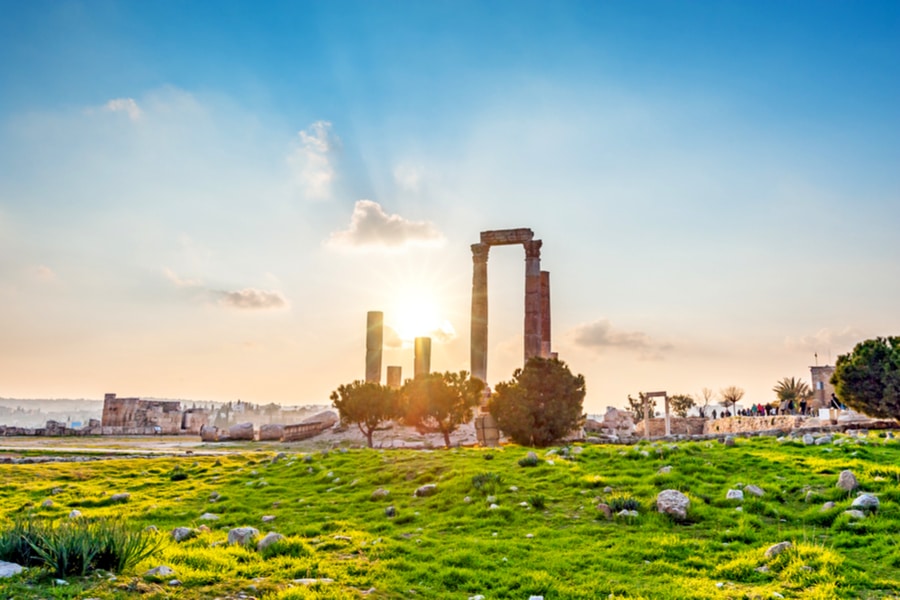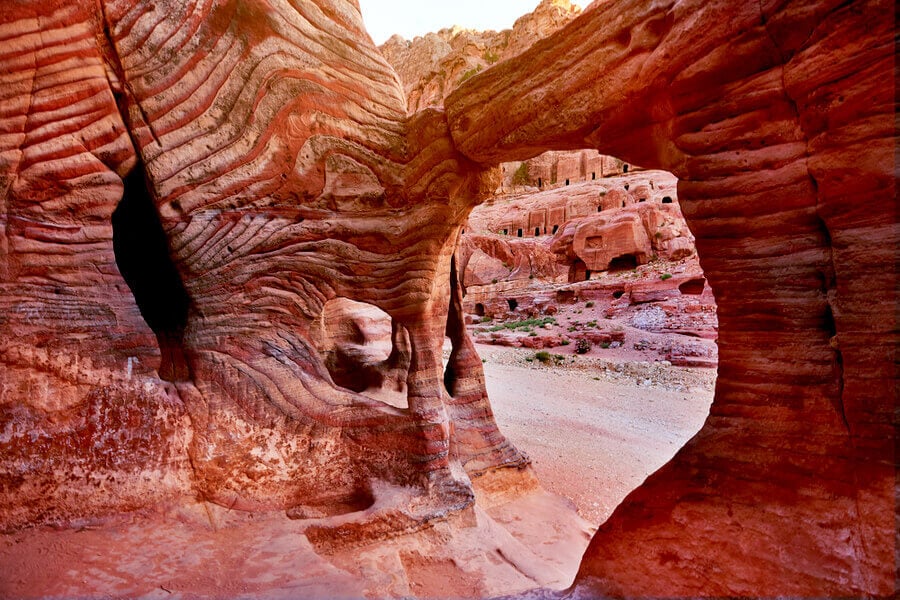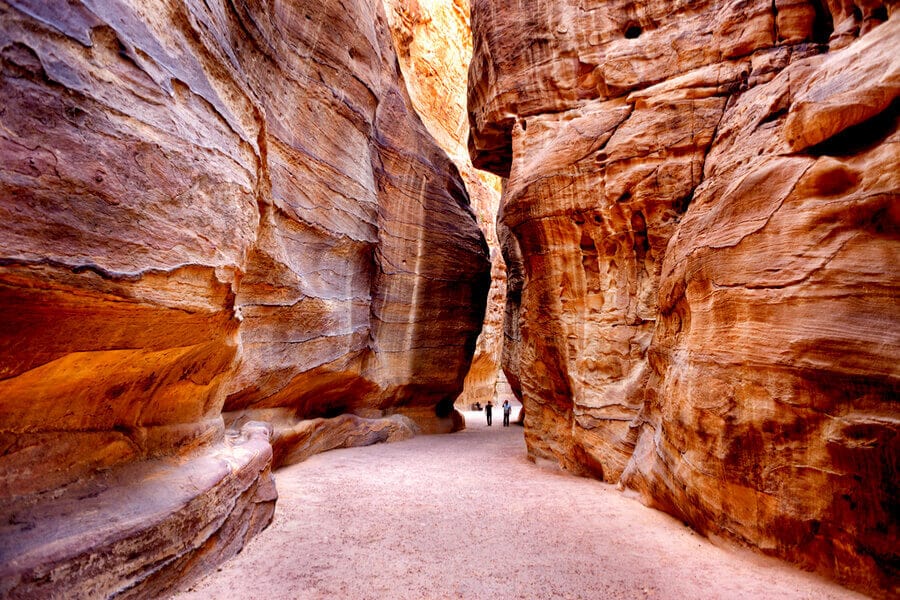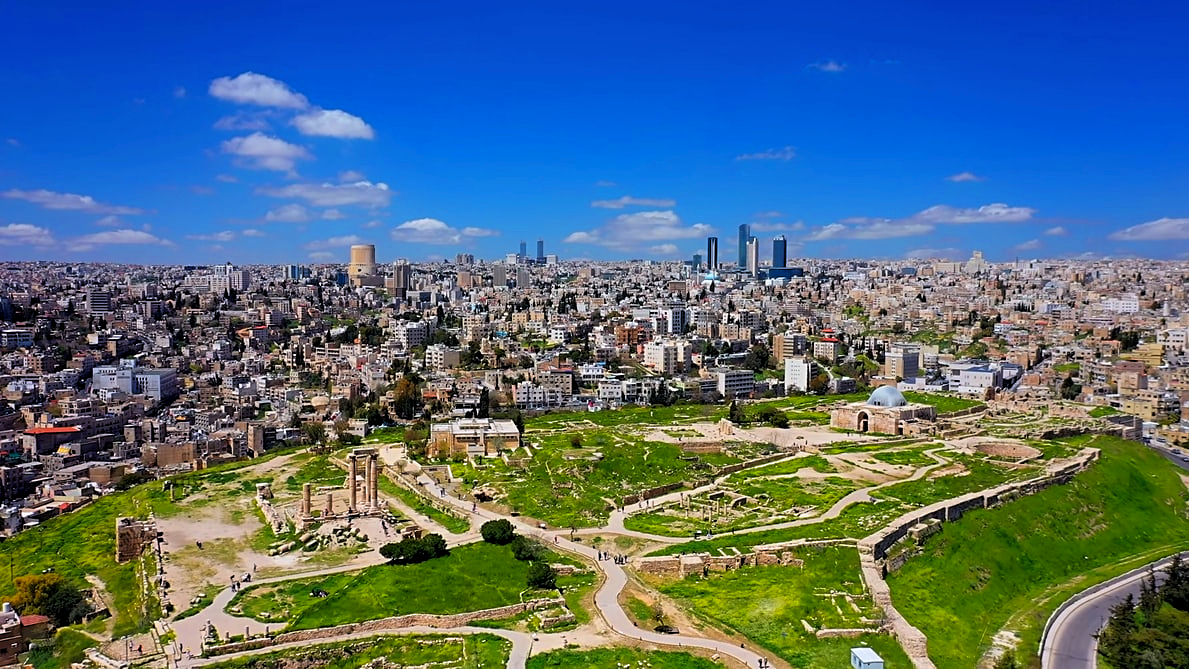How to Travel from Israel to Petra & Jordan
When visiting Israel it is a pity to miss out on one of the Seven Wonders of the World, the ancient city of Petra which is just across the border in the Kingdom of Jordan. Here is a brief guide about how to make the trip from Israel to Petra and back again in as little as one day (although you could stay overnight in Jordan if you preferred). Since the signing of a Peace Treaty in 1994 the Israelis and Jordanians have a neighborly relationship and Israelis as well as tourists who are guests in Israel are free to cross the border for a day or more. Some visitors even choose to extend their visit and go on to the Jordanian capital of Amman before returning to Israel.

Temple of Hercules at Amman Citadel in Amman, Jordan at sunset. Photo credit: © Shutterstock
How to travel from Israel to Jordan?
Many visitors like to take guided Petra tours from Israel, in which they'll switch buses at the Israeli-Jordanian border and be on their way. Travelers who decided to Visit Petra from Israel on their own will have to handle transportation themselves; They'll have to switch between an Israeli Taxi and a Jordanian, and won't be able to take a car they rented in Israel across the border.
The actual process of crossing the border can take longer than you might expect and depending on a range of issues it can take anywhere from one to three hours to complete the crossing. For this reason, if traveling independently try to leave early. All travelers arriving with a group must leave with the same group. Note that current regulations are subject to change so check with your tour company or embassy before setting off to the border.

Inside The Rose City Of Petra. Photo credit: © Shutterstock
What is Petra?Petra is an ancient city carved out of rose-colored rocks by the Nabataean civilization as early as 312BC. The city is in southern Jordan on the slopes of the Biblical Mount Hor (Jebel al-Madhbah). Petra has been named a UNESCO World Heritage Site for its 27 intricate carved structures like temples, tombs, and public buildings carved out of the rock and for the ingenious water conduit system.
During the Nabataean period, Petra was a major stop along the trade route which ran from the Arabian Peninsula and Egypt up to the Mediterranean and Syria. In the years following the decline of the Nabataean civilization, Petra was also inhabited by Romans ad Christians who both left their mark in the form of a Roman amphitheater and Byzantine Churches. Petra is also called the Lost City as it remained hidden for many years before being rediscovered in 1812. In 1917 T.E. Lawrence (Lawrence of Arabia) led the Arabs in a revolt against the Ottomans at Petra.

A couple in Petra. Photo credit: © Shutterstock
Jordanian VisasNationals from many countries do not require a visa for Jordan; check with the Jordanian embassy in your country or Israel to see if your nationality can travel visa-free. King Hussein Bridge (Allenby Bridge crossing) – Foreign nationals cannot get a visa for Jordan at the border and must be pre-arranged through the Jordanian embassy but those traveling with an Israeli tour group can have their visa arranged by the tour company.
Wadi Araba Crossing – As of January 2016 those traveling outside of a group tour will no longer be able to get a Jordanian visa at the Wadi Araba crossing in Eilat and will have to pre-arrange a visa at a Jordanian embassy. If you have pre-arranged your visa at the Jordanian embassy there is no visa fee at the border but you need to pay the $65 border tax.
Israeli tour groups can still get visas at the Araba border crossing. If traveling with an Israeli tour group you don’t need to worry about the visa situation as your tour company will take care of the details and let you know of any requirements. The crossing involves a visa fee of approximately $60 and on reentry into Israel, there is an exit tax from Jordan of approximately $13.

The Siq, is the ancient main entrance leading to the city of Petra. Photo credit: © Shutterstock
Crossing from Israel to JordanThree border crossings connect Israel and Jordan: the Sheikh Hussein crossing, Allenby (King Hussein) crossing, and the Wadi Araba crossing in Eilat.
1. Allenby Crossing (King Hussein Bridge Crossing)
This is the nearest border crossing to Jerusalem, just an hour away; 5 km east of Jericho and 57km from Amman. The border crossing is open for travelers to Israel Sunday-Thursday 8 am-8 pm for entry and 8 am-2 pm for departures from Jordan plus Friday-Saturday 8 am-1 pm. The crossing operates throughout the year except for the Jewish Day of Atonement (Yom Kippur) and the Islamic Feast of the Sacrifice (Eid al-Adha).
The crossing is divided into a Departure Hall for Palestinians, Arrival Hall for Palestinians, Departure Hall for Tourists and East Jerusalem Citizens, and Arrival Hall for Tourists and East Jerusalem Citizens. This crossing is for Palestinians and tourists but is prohibited for Israeli citizens.
2. Sheikh Hussein Crossing
Located in the north of Israel close to the southern end of the Sea of Galilee this Israeli/Jordanian border crossing is 90 km from Amman. It is open Sunday to Thursday 8 am-10 pm and Friday-Saturday 9 am-8 pm.

Amman Citadel. View from atop. Photo by Daniel Qura on Unsplash
3. Wadi Araba Crossing
This is the most common border crossing used for tourists traveling to Petra from Israel. This border crossing is located in Eilat on the shore of the Red Sea and is 324 km from Amman. This border crossing services Israeli and foreign tourists who travel on foot or in a vehicle. The Wadi Araba crossing is open Sundays-Thursdays 6:30 am-8 pm and Friday-Saturday 8 am-8 pm. This crossing is closed on the Islamic New Year (Hijra) and Jewish New Year (Yom Kippur).
Entrance visas are not issued at this border crossing to individual travelers and should be arranged at the Jordanian embassy in your country or in Israel. People traveling in Israeli tourism company group tours do not require entry visas for this border crossing. If you make arrangements 24 hours in advance (or travel with a guided group that arranges it for you) and have a pre-bought entry ticket to Petra Archeological Site or official entry documents you do not have to stay the mandatory 24 hours in Jordan.
4. Across the Red Sea
Recent changes to regulations have caused some tour companies to include a tour to Jordan and Petra via the Red Sea and Aqaba. Israeli tourists are taken across the Taba border crossing in Eilat between Egypt and Israel. From there, there are regular ferries across the Red Sea to the Jordanian port city of Aqaba. It takes about 45 minutes to make the ferry crossing. From Aqaba, tours proceed to the ancient city of Petra.

Eilat Aquapark. Photo by Michal Ico on Unsplash
 Login / Register
Login / Register
 Contact Us
Contact Us
 Certificate of Excellence
Certificate of Excellence Guaranteed Departure
Guaranteed Departure Low Prices Guaranteed
Low Prices Guaranteed 24/7 Support
24/7 Support




